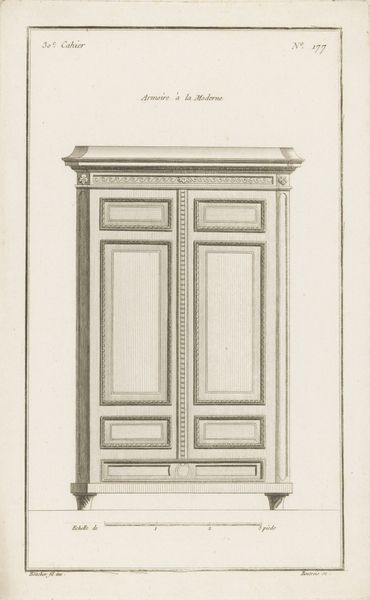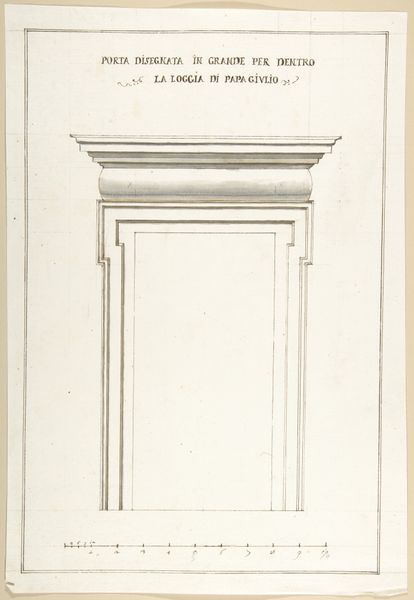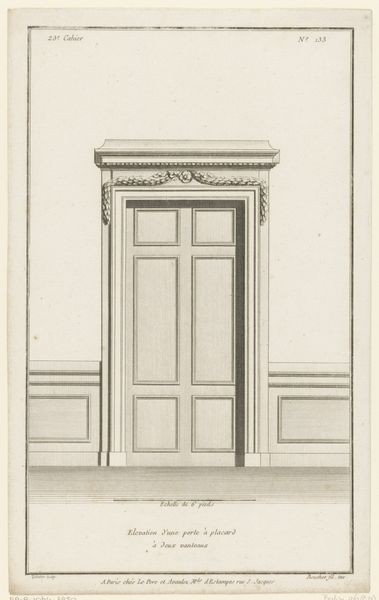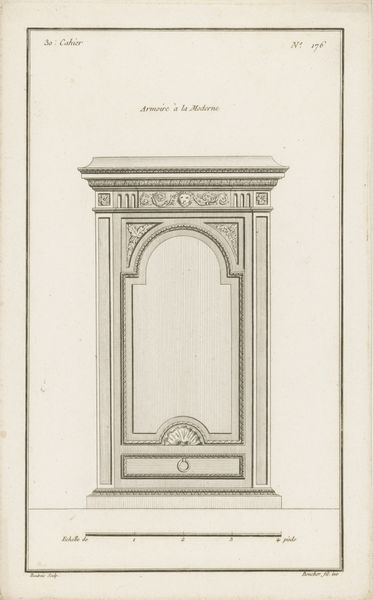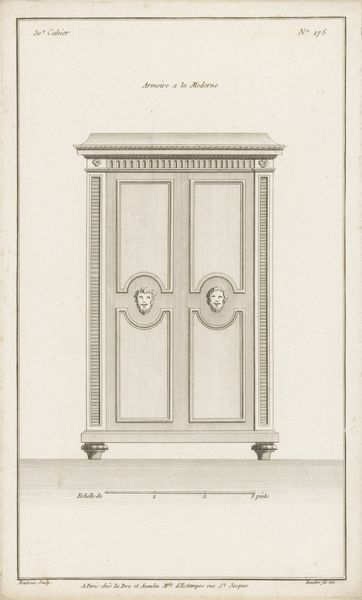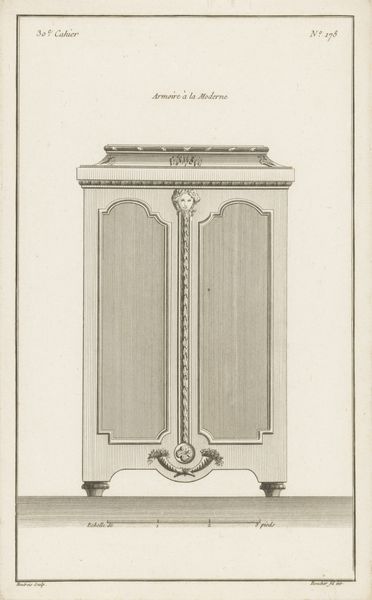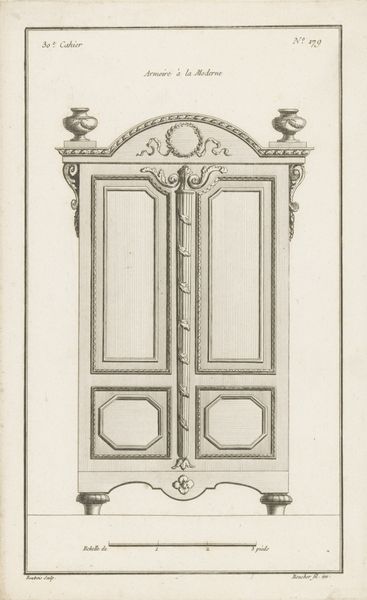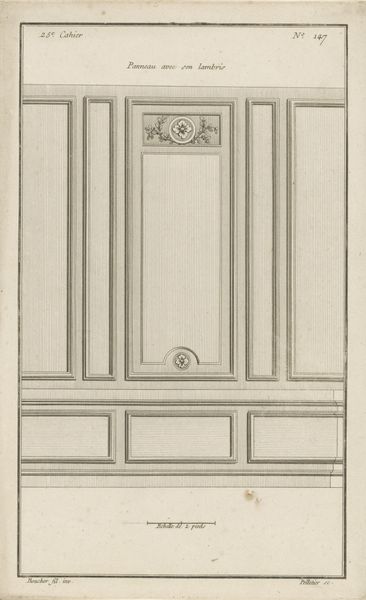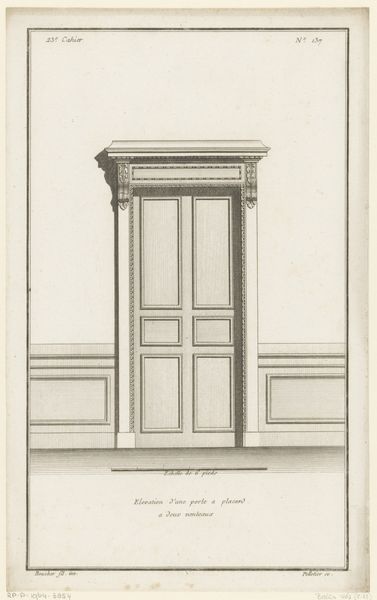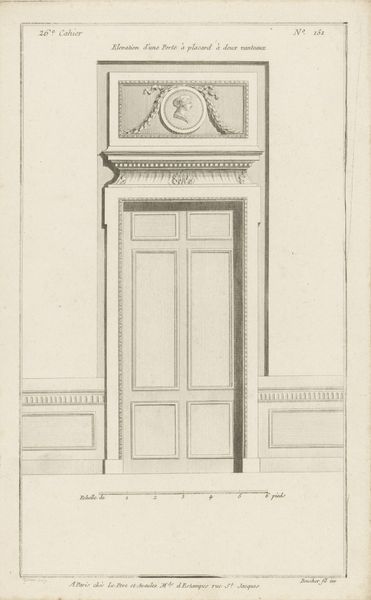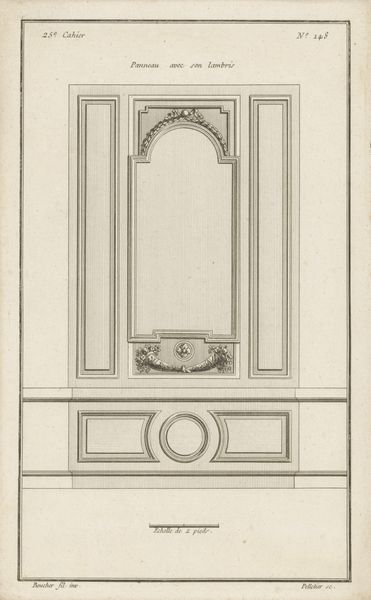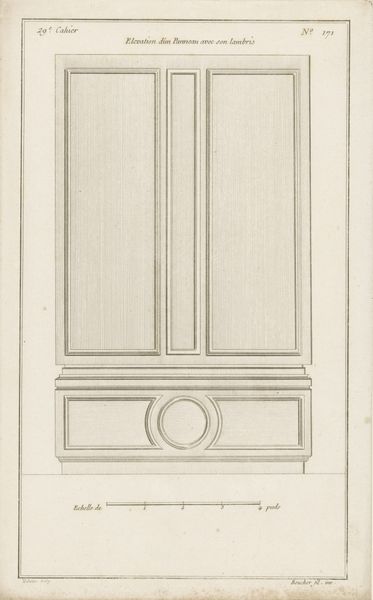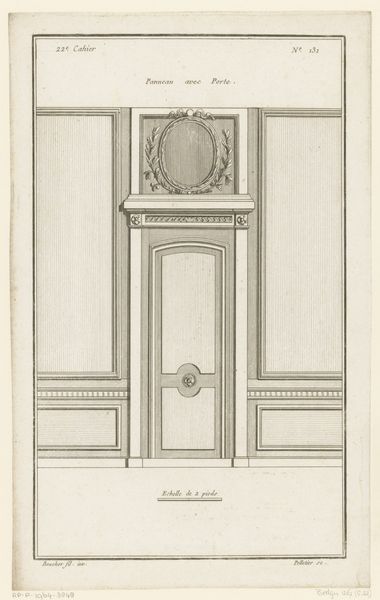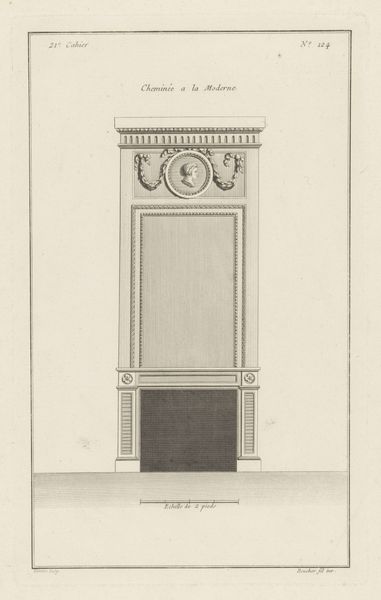
drawing, paper, ink, architecture
#
drawing
#
neoclacissism
#
paper
#
form
#
ink
#
geometric
#
line
#
decorative-art
#
architecture
Dimensions: height 325 mm, width 203 mm
Copyright: Rijks Museum: Open Domain
Curator: Right now, we’re standing in front of a fascinating drawing attributed to Philibert Boutrois, entitled “Kast met bloemmotieven,” dating back to between 1772 and 1779. It’s a design for a cabinet, rendered in ink on paper. What strikes you first about it? Editor: There's such an assertive elegance to it; almost theatrical. Like a proscenium arch ready to reveal…linen. And, those delicate floral details suggest it might feel almost too precious to actually *use*. Is that odd? Curator: Not at all. It’s interesting how you perceive it as a stage, and I think that’s quite insightful. Boutrois was working during a period of intense Neoclassical fervor, and these designs were definitely aspirational, signalling refinement. Consider the precision of the line work and how geometric forms create a balanced yet visually arresting elevation. Editor: It feels more…austere than floral at first. Perhaps "bloemmotieven" are acting as small symbols to a larger effect. Circles acting as miniature suns representing a rising economic strength in dutch culture? Curator: That’s an intriguing point about symbolism and economics! The floral motifs could definitely reflect a deeper desire for order, prosperity, and growth in Dutch society at the time. Neoclassicism often co-opted imagery in exactly this fashion. Editor: The geometry itself – the perfect rectangles and precise circles – I feel reflects the philosophical thinking. Clean lines mirroring rationality and virtue and acting almost like psychological tools to aid in achieving balance within the owner? The piece radiates a feeling of potential rather than comfort. Curator: Precisely. The design serves less as an indication of warmth but as an architectural and intellectual exercise on paper. It’s a testament to the decorative arts functioning not merely as adornment but also as a potent mirror to societal aspirations. Editor: Indeed, this cabinet blueprint seems more like an elaborate philosophical treatise rendered in lines and geometric flowers! Now I am keen to continue this philosophical thread back out to the real world! Curator: Well said. Perhaps we've glimpsed not only the surface of the cabinet, but something far more essential.
Comments
No comments
Be the first to comment and join the conversation on the ultimate creative platform.
